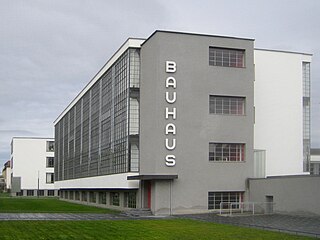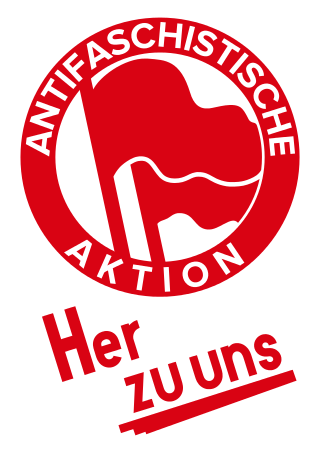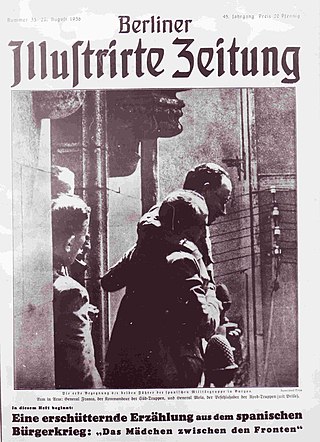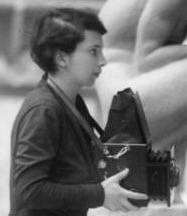Related Research Articles

Weimar culture was the emergence of the arts and sciences that happened in Germany during the Weimar Republic, the latter during that part of the interwar period between Germany's defeat in World War I in 1918 and Hitler's rise to power in 1933. 1920s Berlin was at the hectic center of the Weimar culture. Although not part of the Weimar Republic, some authors also include the German-speaking Austria, and particularly Vienna, as part of Weimar culture.

The Communist Party of Germany was a major far-left political party in the Weimar Republic during the interwar period, an underground resistance movement in Nazi Germany, and a minor party in West Germany during the postwar period until it was banned by the Federal Constitutional Court in 1956.

Helene Stöcker was a German feminist, pacifist and gender activist. She successfully campaigned to keep same sex relationships between women legal, but she was unsuccessful in her campaign to legalise abortion. She was a pacifist in Germany and joined the Deutsche Friedensgesellschaft. As war emerged, she fled to Norway. As Norway was invaded, she moved to Japan and emigrated to America in 1942.

Antifaschistische Aktion was a militant anti-fascist organisation in the Weimar Republic started by members of the Communist Party of Germany (KPD) that existed from 1932 to 1933. It was primarily active as a KPD campaign during the July 1932 German federal election and the November 1932 German federal election and was described by the KPD as a "red united front under the leadership of the only anti-fascist party, the KPD."

Adolf Bruno Behne was a German critic, art historian, architectural writer, and artistic activist. He was one of the leaders of the Avant Garde in the Weimar Republic.

Arbeiter-Illustrierte-Zeitung or AIZ was a German illustrated magazine published between 1924 and March 1933 in Berlin, and afterward in Prague and finally Paris until 1938. Anti-Fascism and pro-Communism in stance, it was published by Willi Münzenberg and is best remembered for the propagandistic photomontages of John Heartfield.
Manfred George, born Manfred Georg Cohn, later shortened to Manfred Georg, was a German journalist, author and translator. He left Germany after the Nazis came to power, living in several different European countries and eventually emigrating penniless to the United States in 1939. He became the editor of Aufbau, a periodical published in German, and transformed it from a small monthly newsletter into an important weekly newspaper, especially during World War II and the postwar era, when it became an important source of information for Jews trying to establish new lives and for Nazi concentration camp survivors to find each other. George remained Editor in Chief of Aufbau until his death.

Gabriele Reuter was a German writer.

Die Freundin was a popular Weimar-era German lesbian magazine published from 1924 to 1933. Founded in 1924, it was the world's first lesbian magazine, closely followed by Frauenliebe and Die BIF. The magazine was published from Berlin, the capital of Germany, by the Bund für Menschenrecht, run by gay activist and publisher Friedrich Radszuweit. The Bund was an organization for homosexuals which had a membership of 48,000 in the 1920s.

The Berliner Illustrirte Zeitung, often abbreviated BIZ, was a German weekly illustrated magazine published in Berlin from 1892 to 1945. It was the first mass-market German magazine and pioneered the format of the illustrated news magazine.

Yva was the professional pseudonym of Else Ernestine Neuländer-Simon who was a German Jewish photographer renowned for her dreamlike, multiple exposed images. She became a leading photographer in Berlin during the Weimar Republic.

Maria Leitner was a Hungarian writer and journalist in the German language. She is remembered as a pioneer of "undercover reporting".
Fred K. Prieberg was a German musicologist. He was a pioneer in the field of history of music and musicians under the Nazi regime.
Hermann Wunsch was a German composer, conductor, music theorist and lecturer in composition.
Hans Robertson was a German photographer and photojournalist of the Weimar Republic. He had a studio in Berlin focused on photography of dance, theatre, and portraits of its people including Harald Kreutzberg, Vera Skoronel and Mary Wigman, and of other public figures such as Käthe Kollwitz, Heinrich Mann, Gustav Stresemann and Max Schmeling.
Auguste Lilly Marga Baruch was a German photographer who worked and lived in Berlin in the 1920s.

Julie Elias was a German fashion journalist and author of cookbooks, which also dealt with Jewish cuisine. She was worldly, highly educated, and during her lifetime was known beyond the borders of Germany as a culinary salonnière and successful writer. In 1938, persecuted as a Jew, she had to flee Germany. After the destruction of European Jewry in the Holocaust, there were hardly any traces of her left in the public memory.

Tempo was a daily newspaper published in Germany between 1928 and 1933, with Berlin as its main area of distribution.
Das Neue Russland was a magazine which was published in Berlin, Weimar Republic, between 1923 and 1933. It was official media outlet of the Society of Friends of the New Russia. Its subtitle was Zeitschrift für Kultur, Wirtschaft und Literatur.
Hermann Ullstein was a German Jewish publisher.
References
- 1 2 Patrick Rössler; Achim Bonte; Katja Leiskau (2012). "Digitization of Popular Print Media as a Source for Studies on Visual Communication: Illustrated Magazines of the Weimar Republic". Historical Social Research. 37 (4): 176. JSTOR 41756481.
- ↑ "Illustrierte Magazine der Klassischen Moderne" (in German). Art Historicum. Retrieved 22 October 2021.
- 1 2 3 Valentina Lehmann (2018). Skandal um Eva. Repräsentationen und Imaginationen weiblicher Delinquenz in illustrierten Magazinen der Weimarer Republik (PhD thesis) (in German). Paderborn University. pp. 41–42.
- 1 2 3 "Uhu. Das Ullsteinmagazin". arthistoricum.net.
- ↑ "Unglaubliche Geschichte: Hitler erhält den Friedensnobelpreis 1932". Uhu. 8 (1): 32. October 1932.
- ↑ Sellheim, Hugo (October 1931). "Does sport make women happy? ('Macht der Sport die Frauen glücklich?')". Uhu. 8 (1): 18–24 – via arthistoricum.net.
- ↑ Uhu: Das Magazin der 20er Jahre. Nachdruck der Erstveröffentlichungen aus den Original-Uhu-Bänden von 1924-1933 [Uhu: The Magazine of the 1920s. Reprint of the Original Publications from the Uhu-Volumes 1924-1933]. Berlin: Ullstein Verlag. 1979.
- ↑ Anita, "Sex Appeal: A New Catchword for an Old Thing" (1928), in The Weimar Republic Sourcebook, edited by Anton Kaes, Martin Jay, and Edward Dimendberg. University of California Press, 1994, pp. 667-68.
- ↑ Anita (October 1928). "Sex Appeal. Ein neues Schlagwort für eine alte Sache". German History in Documents and Images.